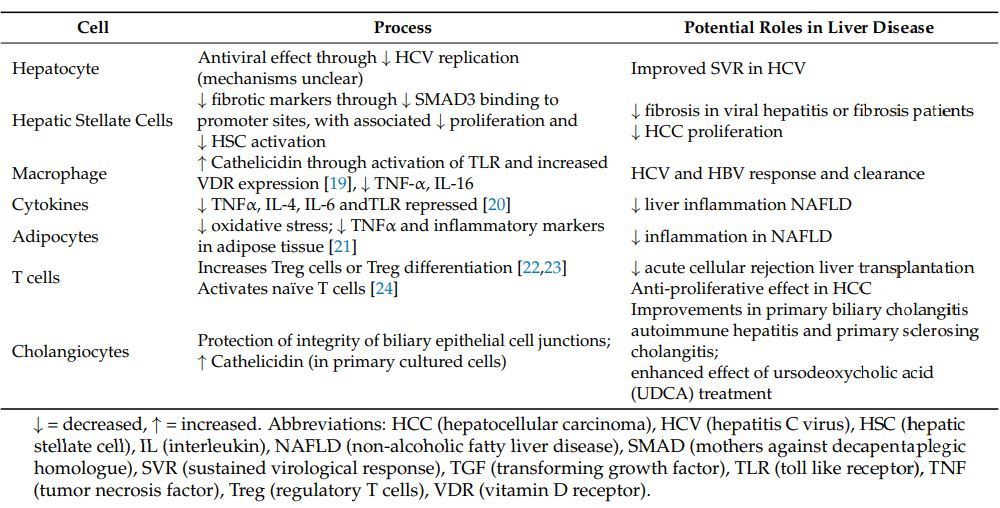Vitamin D and the Liver – Is it Correlation or Cause
Nutrients 2018, 10(4), 496; doi:10.3390/nu10040496
(This article belongs to the Special Issue Changing Times for Vitamin D and Health)
📄 Download the PDF from VitaminDWiki
Table 1. Potential direct and indirect mechanisms of effect of vitamin D in liver diseases.

Table 2. Selected intervention studies in liver disease and study parameters

Jeremy T. Keane 1, Harendran Elangovan 2, Rebecca A. Stokes 1,2 and Jenny E. Gunton 1,2,3,
1 Centre for Diabetes, Obesity & Endocrinology, The Westmead Institute for Medical Research (WIMR), Westmead, Sydney, NSW 2145, Australia
2 The Garvan Institute of Medical Research, The University of New South Wales (UNSW), Darlinghurst, Sydney, NSW 2010, Australia
3 Faculty of Medicine and Health, The University of Sydney, Westmead Hospital, Westmead, Sydney, NSW 2145, Australia
Vitamin D is becoming increasingly accepted as an important physiological regulator outside of its classical role in skeletal homeostasis. A growing body of evidence connects vitamin D with hepatic disease. This review summarises the role of vitamin D in liver homeostasis and disease and discusses the therapeutic potential of vitamin D-based treatments to protect against hepatic disease progression and to improve response to treatment. While pre-clinical experimental data is promising, clinical trials around liver diseases have mostly been under-powered, and further studies will be required to clarify whether vitamin D or vitamin D analogues have beneficial effects on liver disease.
